The diet for gout is based on minimizing the amount of purines in the diet, which helps lower uric acid levels in the body and normalize metabolism. The basis of the diet consists of vegetables, fruits, berries, cereals, dairy products. The amount of meat and other protein foods should be limited. Diet is considered a mandatory part of treatment because without it, medications are ineffective.
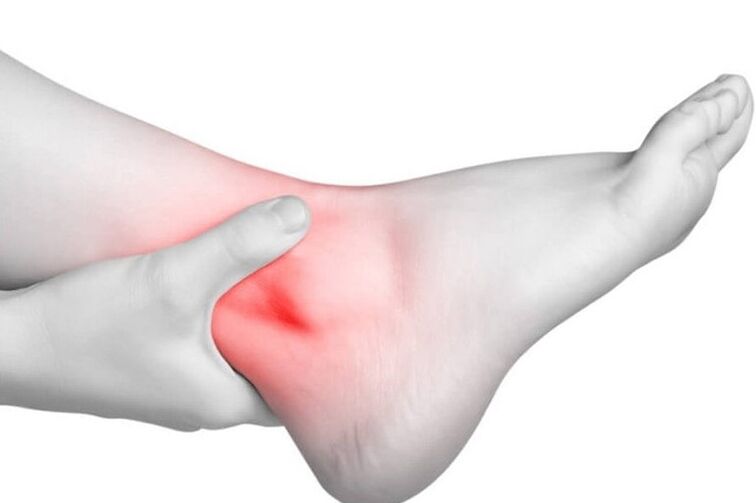
The benefits of a diet for gout
Benefits of food therapy:
- a complete diet with a fairly high calorie content allows you to not feel hungry;
- removal of harmful foods containing oxalic acid and purine, reduces the severity of gout symptoms, relieves pain, swelling;
- adhering to a diet reduces the risk of relapse and irritation;
- a healthy diet with restriction of spicy, fatty, fried foods improves overall well-being and body condition;
- Correct food selection reduces the risk of complications, including kidney failure, atherosclerosis, the formation of gout nodes in the internal organs;
- Dietary foods are easy to prepare and do not require expensive ingredients.
Eating a diet can help lower uric acid levels and slow down or stop the onset of gout.
Proper nutrition without concomitant therapy can not completely cure a person, but serves as a necessary aid in the fight against pathology and relieves the patient from painful symptoms.

Basic nutrition principles for gout and high uric acid
The purpose of the diet is to limit the intake of purines and intermediate products that increase their concentration. When designing a diet, follow these rules:
- The food eaten per day is divided into 5 meals at regular intervals. Thus, they reduce the load on the digestive system and kidneys, maintaining metabolism in good condition.
- The chemical content of food is carefully controlled. This helps stop the deposition of salts in the tissues, helps to remove stones and gout.
- The total caloric content of the diet is reduced to 2700 kcal per day, while the total weight of food should not exceed 3 kg. This allows you to maintain a normal body weight, as obesity contributes to the worsening of gout.
- The amount of protein is limited to 80 g per day. Animal proteins are trying to be replaced by plant proteins, but they cannot be completely ruled out.
- The daily rate of fat is 80-90 g. Approximately 25% enters the body with vegetable oils, the rest - in the composition of dishes.
- The patient consumes a standard amount of carbohydrates - 400-450 g per day. They enter the body with cereals, dried fruits, nuts.
- To neutralize excess acid, the menu includes many alkaline products: vegetables, milk and fermented dairy products, fresh fruits and berries. They will help the body maintain a balance of substances.
- All meat in diet dishes is pre-cooked for 15 minutes, after which the first juice is drained. Helps to get rid of excess purines in muscle tissue.
- Fluid intake increases to 2-2, 5 liters per day. The diet includes healthy drinks that have a diuretic effect, as well as alkalizing drinks: fruit and berry juices, herbal teas and decoctions, milk, mineral water.
- The amount of salt is limited to 8-10 g per day. An excess of it promotes the formation of deposits and reduces the rate of urine secretion, which worsens the symptoms of gout.
- Alcoholic beverages are excluded from the diet. Even their infrequent use impairs kidney function, which increases the risk of irritation.
- If necessary, the diet is supplemented with vitamin and mineral complexes. It is necessary to maintain the required level of content of vitamins B2, C, PP and potassium, which has a diuretic effect.
- Fasting days are held once a week, during which the patient eats exclusively fruits, vegetables and purine-poor cereals.
The diet should be combined with a dose of supportive medication, if recommended by the doctor. Since gout is incurable, a person must follow the rules of nutrition throughout his life.
What you can eat
The following foods are allowed in the diet:
- Unpleasant bread products, including black and white bread.
- Vegetables: fennel, corn, beet, onion, garlic, potato, carrot, cabbage, broccoli, cucumber, zucchini, eggplant, squash. Limited quantities: tomatoes, turnips, cauliflower, radish, asparagus, rhubarb, celery, peppers, onion feathers, parsley.
- All fruits and berries except grapes, cranberries, figs and raspberries. Plums are consumed in limited quantities.
- Lean meat: rabbit, chicken, turkey. Consumed no more than 3-5 times a week, the amount of serving up to 170 g.
- Low fat fish (salmon, salmon, trout), seafood: mussels, shrimp, crab and lobster, squid, octopus.
- Eggs - no more than 1 piece. in day.
- Dairy products: kefir, cottage cheese, sour cream, yogurt, cream, unsalted cheese, low-fat whole milk (best diluted). Butter can be added to cereals, decoctions, but it is not used for frying and is not consumed in pure form.
- All cereals and grains, except legumes: rice, buckwheat, millet, oats, etc. It is best to cook them in water or diluted milk.
- Soups based on lean vegetable broth, potatoes.
- Pumpkin, sunflower, flax, sesame seeds.
- Walnuts, pine nuts and hazelnuts, almonds, cashews, hazelnuts, pistachios.
- Dried fruits, except raisins.
- Vegetable oils: sunflower, olive, corn, flax. They are used not only for frying, but also for salads, stews and other things.
- Sweets: marshmallow, jam, jam, marshmallow, ice cream. Chocolate-free candy is allowed.
- Drinks: fruit and vegetable juices (tomato is used with caution), herbal teas with lemon and honey, decoction, fruit drinks, compotes, chicory, kvass. Alkaline mineral water is beneficial.
- Soft spices and herbs: cinnamon, vanilla, bay leaves, citric acid. Light sauces based on sour cream, vegetable soup, vegetable oils.
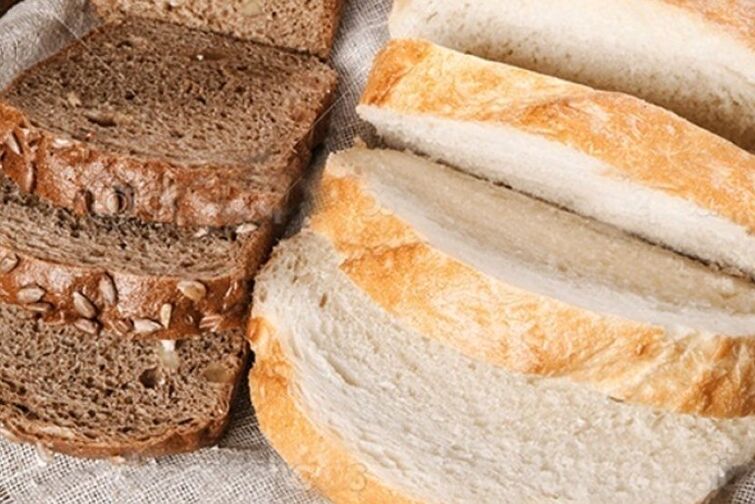
The diet includes a large amount of liquid and semi-liquid foods, light salads, vegetarian products. They not only help reduce the concentration of purine substances, but also reduce the load on the gastrointestinal tract and kidneys.
What you can not eat
The following foods are unacceptable in the diet:
- Sweet pastries.
- Fatty meats, dishes from young animals (beef, chicken), canned and smoked meats, sausages, hot dogs, sausages and other semi-finished products.
- By-products.
- Fatty fish, salted, canned, smoked or fried, caviar.
- Peas, beans, lentils, soybeans and other legumes.
- Mushrooms.
- Sour cream, spinach, olives.
- Spicy and salty cheeses.
- Decoction and soup based on meat and offal, fish, mushrooms.
- Cake, pasta, bun cream.
- Peanuts.
- Animal fats: fat, fat. Margarine.
- Alcoholic beverages, strong tea, coffee, cocoa.
- Hot spices and sauces, including mustard, horseradish, mayonnaise, ketchup.
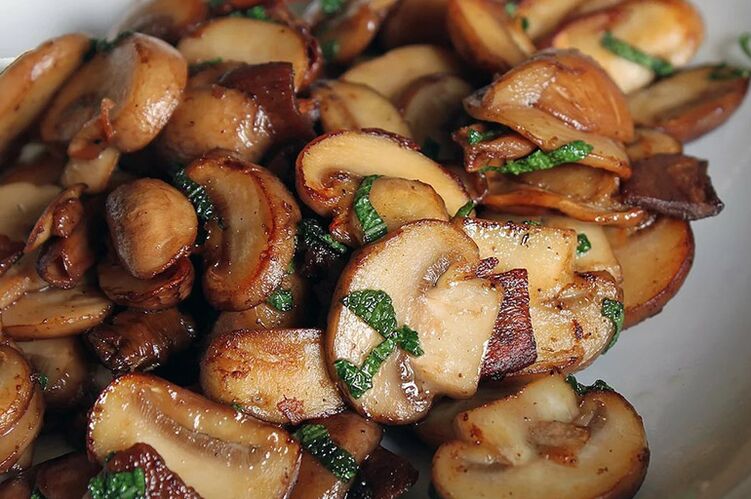
Eating spicy, fatty and fried foods can make your gout symptoms worse.
Table number 6 for the ground floor
In medical institutions, diet no. 6. The medical menu takes into account factors such as the chemical composition of foods, their caloric content, the ratio of proteins, fats and carbohydrates. This allows you to choose the optimal diet for the patient, without making unnecessary calculations every time. Because of this, Table 6 is often used for home treatment of gout: it is universal and has no contraindications.
Diet during an irritation
If gout symptoms intensify, a menu change is recommended. Rules for designing a diet during a deterioration:
- complete elimination of meat and fish from the diet;
- frequent fasting days - up to 4 per week;
- the basis of the diet is fresh fruits and vegetables;
- make sure you drink plenty of alkaline mineral water and other alkalizing beverages;
- all food is served in liquid or semi-liquid form;
- meals are frequent (7-8 times a day), with equal breaks between meals.

The diet is discontinued after eliminating pain and swelling in the legs. It is not recommended to keep it for a long time, as the body will quickly lack vitamins and nutrients.
Menu 7 days
Approximate weekly diet for gout treatment:
| Eating | Monday | Tuesday | Wednesday | Thursday | Friday | Saturday | Sunday |
|---|---|---|---|---|---|---|---|
| BREAKFAST | Wholemeal bread sandwich, vegetable salad with sour cream, pink stew | Milk rice porridge with pumpkin, fresh orange | Oatmeal with butter and jam, homemade fruit jelly with pieces of pulp, herbal tea | Buckwheat porridge with milk, minced apple and carrot salad | Oatmeal with minced apples, berry jam, tea | Millet porridge with milk, soft boiled egg, baked apple stuffed with nuts | Vegetable salad with cheese and sesame seeds, potato pancakes with sour cream |
| lunches | Greek kos, 2 biscuits | Fresh strawberries with cream | Corn hair with skim milk, various nuts | Cottage cheese mousse with dried fruits | Cornflakes with pieces of yogurt and bananas | Ice cream with fruit mousse and berries | Pancakes with jam and pieces of fruit |
| dinner | Vegetable juice with eggs and croutons, minced beets, salad with carrots and apples, banana juice | Vegetable casserole with cheese, steamed chicken kitten, berry jelly | Vegetable soup with salmon, corn porridge, yogurt | Milk noodle soup, stew with vegetables, carrots and fresh apples | Broccoli puree soup, zrazy potatoes with sour cream, fresh orange | Cabbage soup, rice with seafood, milk jelly | Potato soup, vegetable stew with turkey meatballs, milkshake with bananas |
| dinner | Potato croquettes, fresh vegetable slices, herbal tea with lemon | Dolma with sour cream, cottage cheese with pieces of fresh fruit, compote | Potato casserole with vegetables and eggs, vegetable salad coated with linseed oil, berry juice | Minced beets with garlic, oatmeal, fruit salad | Fresh boiled potatoes with herbs and oil, vegetable salad, dried fruit compote | Zucchini stuffed with vegetables stuffed with cheese, vegetable slices with corn oil, fresh bananas | Cucumber and tomato salad, broccoli kitten with sour cream, cheese cakes, bran juice |
| Before bed | Yogurt with fresh berries | Biscuits with berry jam, kefir | Rose juice, apple | Measure with cottage cheese, pear | Milk souffle with fruit | Kefir, tangerine | Cottage cheese with sour cream, compote |
Menu items are interchangeable, they can be changed or supplemented according to taste. The main thing is not to violate the basic principles of diet.
Characteristics of fasting days
The diet for gout excludes complete starvation, as it provokes a worsening of the disease. On fasting days, it is recommended to adhere to a mono diet (watermelon, potatoes, cucumber, carrot) or prepare salads, slices, decoctions of various types of vegetables and fruits.
The use of dairy products, cereals in small quantities is allowed. Fasting days in rice are popular: boiled in milk and eaten with the addition of a small amount of minced apples in small portions.
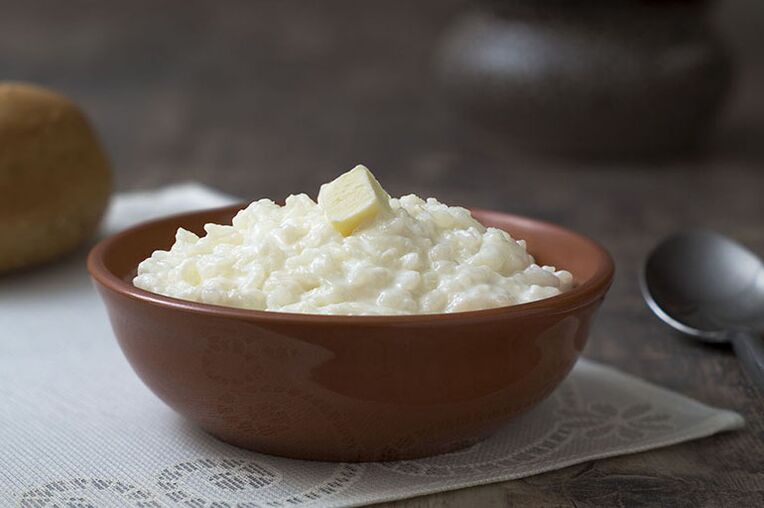
A diet with fermented milk will help you quickly get rid of excess uric acid: it means using only cottage cheese (400 g) and kefir (0, 5 l) during the day.
Recipes for gout
Therapeutic diet allows you to eat many popular dishes: cereals, vegetable soups, stews, salads. They do not require expensive products or special cooking skills. In order for the patient not to experience discomfort from boring, monotonous food, you can diversify the menu using original recipes from the allowed ingredients.
Light cream soup
Low-calorie dish, but quite tasty and satisfying for lunch. To prepare it, you will need the following products:
- 1 onion;
- 1 carrot;
- 1 bunch of spinach leaves
- 1 slice of white bread
- 2 tablespoons lemon juice;
- 2 tablespoons vegetables;
- 1 tablespoon cream;
- 0, 5 tablespoons Sahara.
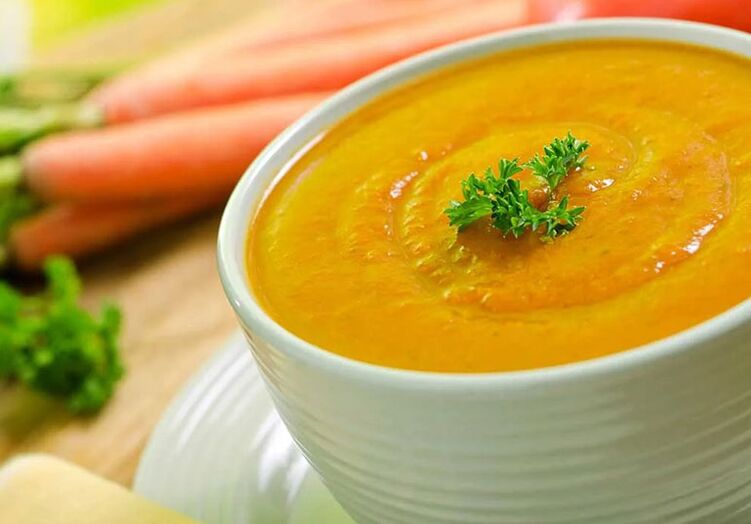
Cut the bread into small cubes, dry in a dry pan. Peel onions and carrots, finely chop. Pour oil into a deep saucepan, heat, place vegetables and simmer for 6-7 minutes. Add the spinach leaves and blend with a blender. Bring the mixture to a boil, add lemon juice and sugar. Remove from the heat, arrange on plates. Add a little cream and white bread to each serving.
Casserole with cottage cheese
The dish is used as a dessert or appetizer. To prepare it you will need:
- 140 g of cottage cheese;
- 70 g sour cream;
- 1 egg;
- 3 tablespoons. l. bollgur;
- 1 tablespoon. l. Sahara;
- 0, 5 tablespoons quenched with lemon juice;
- dried fruits, nuts to taste;
- salt.
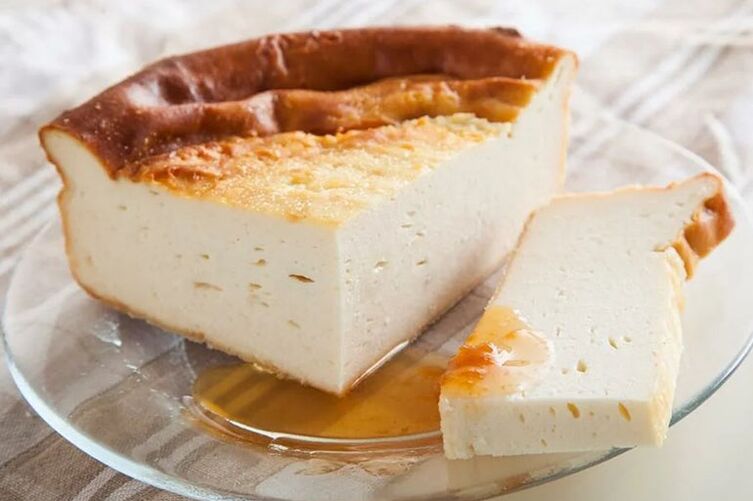
Mix the cottage cheese with sour cream. Add salt, sugar, oatmeal to the resulting mass. Add finely chopped dried fruits, nuts. Bring to homogeneity, mix with baking soda. The mass laid out in a baking dish should be placed in a preheated oven at 180 ° C and baked until golden brown.
Be it boiled chicken with gravy
A low-calorie main course that can be eaten alone or with a side dish. For cooking you will need:
- 350 g chicken fillet;
- 2 onions;
- 1 carrot;
- 1 clove of garlic;
- 1 egg;
- 1 tablespoon. rice;
- 70 g white bread;
- 200 ml of vegetable broth;
- 50 g sour cream;
- 2 tablespoons. l. milk;
- 0, 5 tbsp. l. Flour;
- green onions, parsley, dill to taste;
- vegetable oil for frying;
- salt.
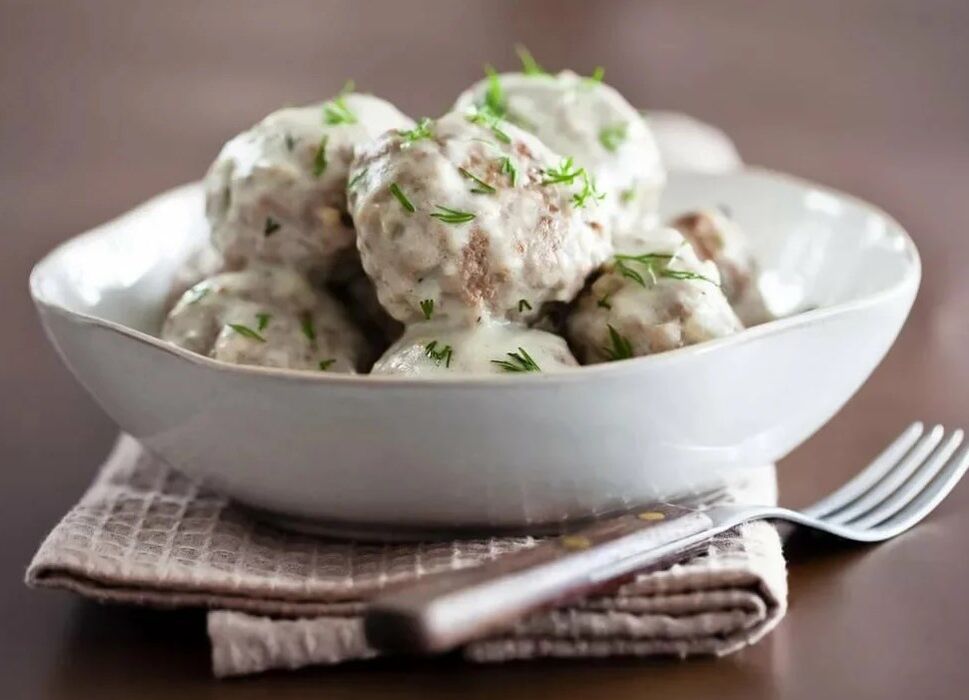
Coat the bread in milk. Boil the rice without salt, cool. Cut the chicken fillet into medium pieces and place in a blender. Add 1 chopped onion, garlic, bread and herbs, beat in an unripe egg and chop until smooth. After mixing it with the rice, you have to salt it and leave it in the fridge for 20 minutes. Then the meatballs are formed, steamed for 6-8 minutes.
Finely chop the remaining onion and carrot. Fry the vegetables in oil for 2-3 minutes, pour in the broth, add flour and sour cream. Heat the sauce over low heat until thick, add the meatballs and cook for 5-6 minutes. Sprinkle with herbs before serving.
Casserole with eggplant and minced meat
A hearty side dish, perfect for lunch or dinner. To prepare it, you need to take the following ingredients:
- 300 g minced meat;
- 2 large eggplants;
- 1 onion;
- 1 clove of garlic;
- 3 tablespoons. l. tomato paste;
- 2 tablespoons. l. Flour;
- 120 g hard cheese;
- cream 50 ml;
- vegetable oil;
- salt.
Cut the eggplants into long slices, arrange them with salt, so that they give juice. Coat with flour, fry in oil on both sides until half cooked. Chop the garlic and onion, fry until golden brown. Add the minced meat, simmer over medium heat for 3 minutes, then the tomato paste. Pour 0, 5 tbsp. water, salt to taste. Cover and cook for another 5 minutes.
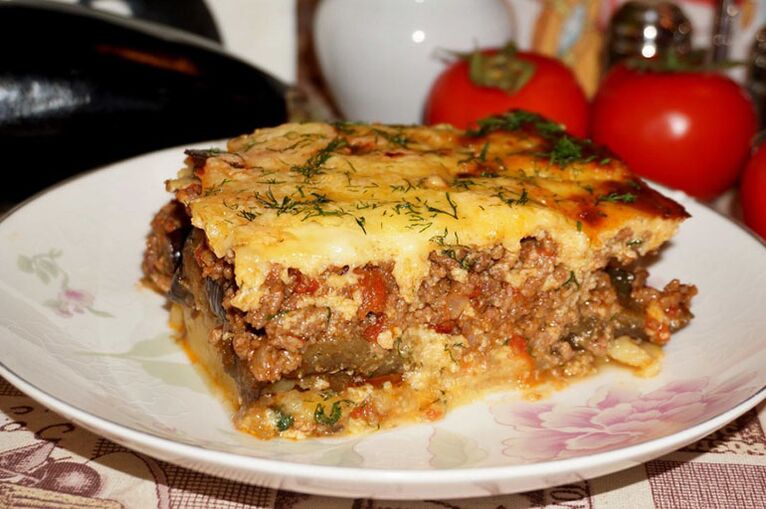
Place the eggplant slices in a greased baking dish in a thick layer, on top of them - minced meat, followed by minced cheese or cut into slices. Pour the cream and bake in preheated oven at 180 ° C for half an hour.
Pumpkin soup puree
The first traditional meal of the day. For cooking, you should get the following products:
- 0, 5 kg of pumpkin, peeled, films and seeds;
- 2 tablespoons. l. butter;
- 2 tablespoons. l. rice;
- 1 tablespoon. l sugar;
- 250 ml of milk;
- flavor creams;
- salt.
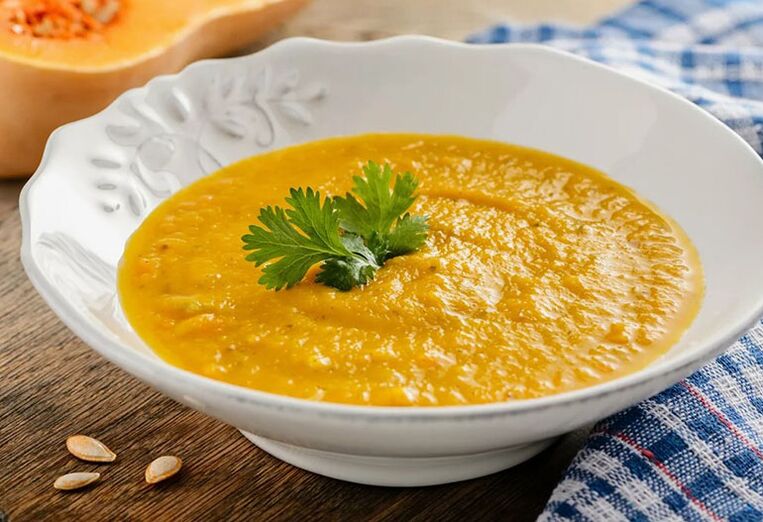
Cut the pumpkin into cubes, place in a saucepan, add the rice, salt and sugar. Add 1 liter of water and cook until softened. Pour the melted butter and rub through a sieve. Return to the stove, add the milk and bring to the boil, then remove from the heat. Arrange the prepared pumpkin soup on plates and arrange with cream.
Nutritionist assessments
- "Compliance with a gout diet is necessary for patients for a full life. Proper diet helps relieve pain and swelling and reduces the risk of complications. When compiling a menu, it is worth paying attention to protein, as patientstheir often lack their usual products.
- "Gout diet is effective in lowering uric acid levels in the body. It is recommended that patients adhere to it throughout their lives to prevent exacerbations and to continue the asymptomatic course of the disease. "
- "Diet reduces uric acid levels in the body by about 15%. It is effective in treating gout when combined with supportive medications.
Disadvantages of diet for gout
The main disadvantage of the diet is that food restrictions are quite strict. Even minor violations can provoke a worsening of the disease. The diet is especially unpleasant for lovers of meat and alcoholic beverages.
Another disadvantage of the diet is the lack of animal protein, which must be compensated by expensive and unusual dairy and plant products. In addition, the diet is not suitable for weight loss and is intended for treatment only.




















